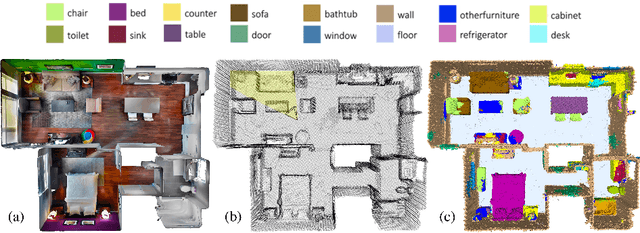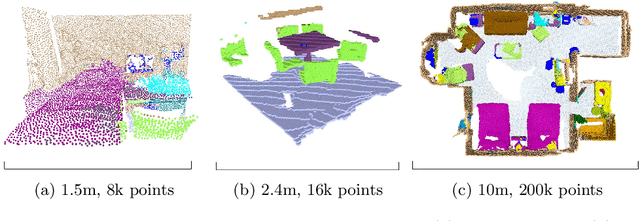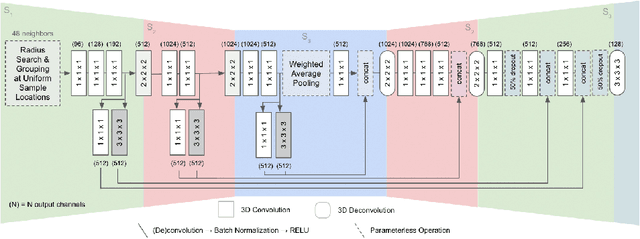Dario Rethage
Deep Learned Full-3D Object Completion from Single View
Aug 21, 2018


Abstract:3D geometry is a very informative cue when interacting with and navigating an environment. This writing proposes a new approach to 3D reconstruction and scene understanding, which implicitly learns 3D geometry from depth maps pairing a deep convolutional neural network architecture with an auto-encoder. A data set of synthetic depth views and voxelized 3D representations is built based on ModelNet, a large-scale collection of CAD models, to train networks. The proposed method offers a significant advantage over current, explicit reconstruction methods in that it learns key geometric features offline and makes use of those to predict the most probable reconstruction of an unseen object. The relatively small network, consisting of roughly 4 million weights, achieves a 92.9% reconstruction accuracy at a 30x30x30 resolution through the use of a pre-trained decompression layer. This is roughly 1/4 the weights of the current leading network. The fast execution time of the model makes it suitable for real-time applications.
Fully-Convolutional Point Networks for Large-Scale Point Clouds
Aug 21, 2018



Abstract:This work proposes a general-purpose, fully-convolutional network architecture for efficiently processing large-scale 3D data. One striking characteristic of our approach is its ability to process unorganized 3D representations such as point clouds as input, then transforming them internally to ordered structures to be processed via 3D convolutions. In contrast to conventional approaches that maintain either unorganized or organized representations, from input to output, our approach has the advantage of operating on memory efficient input data representations while at the same time exploiting the natural structure of convolutional operations to avoid the redundant computing and storing of spatial information in the network. The network eliminates the need to pre- or post process the raw sensor data. This, together with the fully-convolutional nature of the network, makes it an end-to-end method able to process point clouds of huge spaces or even entire rooms with up to 200k points at once. Another advantage is that our network can produce either an ordered output or map predictions directly onto the input cloud, thus making it suitable as a general-purpose point cloud descriptor applicable to many 3D tasks. We demonstrate our network's ability to effectively learn both low-level features as well as complex compositional relationships by evaluating it on benchmark datasets for semantic voxel segmentation, semantic part segmentation and 3D scene captioning.
 Add to Chrome
Add to Chrome Add to Firefox
Add to Firefox Add to Edge
Add to Edge